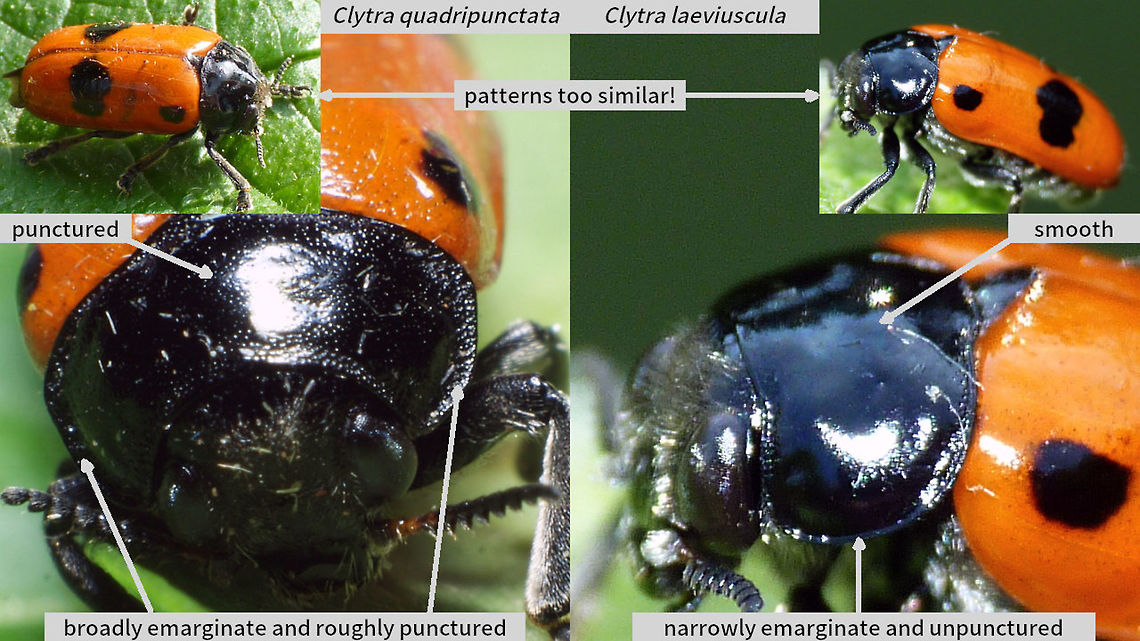
Clytra quadripunctata vs laeviuscula
Over large parts of northern and central Europe these are the two Clytra spp. that often get confused, so here is a quick and dirty ID help.
Some keys stress that laeviuscula normally has much larger hind spots, that may even blend into an uninterrupted band and that quadripunctata has a much smaller hind spot that doesn't reach the margins of each elytron, but clearly that is NOT a reliable character for ID (see top corner insets).
Best character for photo ID is the pronotum:
The disc is almost smooth (_very_ finely punctate) on laeviuscula and clearly punctate on quadripunctata and the lateral margin is widly emarignate with a rough surface on quadripunctata and only narrowly emarignate and smooth on laeviuscula
That said: On most average photos this is quite hard to appreciate correctly, so always make a point of getting this in focus on a few close-up shots!
No species identified
The species on this photo is not identified yet. When signed in, you can identify species on photos that you uploaded. If you have earned the social image editing capability, you can also identify species on photos uploaded by others.
comments (8)
The Clytra quadripunctata is from the Netherlands, the laeviuscula is from France Posted 7 years ago, modified 7 years ago
https://www.jungledragon.com/user/3043/unmapped
Except of course for the ones showing multiple species from multiple locations. Posted 7 years ago
Punctation: relating to a punctate surface texture.
Punctate: a surface texture characterized by numerous puncture-like marks or impressions, often described in terms of puncture size, shape, and density.
So, for example, in sentences, that could be: The clypeus is punctate. The elytra have punctations.
I have heard people say "punctuated", but wonder if that is because of a misspelling, autocorrect, or lack of understanding. I have not heard the term "punctured" used in this sense, but I'm sure it is also acceptable. So, you can change it to "punctate/punctated/punctation", or leave it if you wish :)
Posted 7 years ago